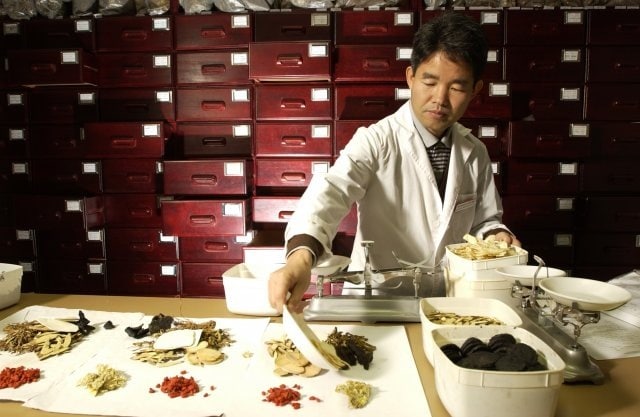by Esther Leibel
Do skilled ethnic migrants steal jobs from local skilled workers? According to Prithwiraj (Raj) Choudhury and Do Yoon Kim, this question may originate from a flawed assumption—that domestic and foreign workers carry equal skills, and are essentially interchangeable. Yet, evidence from their recently accepted SMJ paper reveals that foreign and domestic workers differ in the knowledge they carry, as well as in their ability to recombine such knowledge.
In “The Ethnic Migrant Inventor Effect: Codification and Recombination of Knowledge Across Borders Firms,” Choudhury and Kim suggest that firms hiring skilled ethnic migrants may benefit twice—first, they can access tacit know-how that would otherwise remain confined to the inventor’s home country. Second, they can generate novel ideas when non-ethnic inventors recombine elements of the foreign knowledge with elements from the host country (think American chicken parmesan vs. the traditional Italian eggplant parmigiana).
Taking advantage of a natural experiment, Choudhury and Kim show that an H1B Visa shock that provided an oversupply of Indian and Chinese skilled workers to the U.S. between 1991 and 2001 led to a 4.5% increase in herbal patenting among pharmaceutical firms between 1999 and 2003 at capped firms vs. firms that were exempted from the Visa cap in the first place (e.g., academic institutions). In addition, while firms that were subject to the visa cap were 31.3% less likely to recombine knowledge (i.e., combining Chinese and Indian herbs with synthetic compounds to obtain new preparations), knowledge recombination was more likely to happen in mixed teams and fully non-ethnic teams, as opposed to ethnic teams. Taken together, these results suggest that skilled ethnic migrants and western inventors are both important to knowledge production: the former facilitate knowledge transfer, while the latter are best at blending foreign and domestic knowledge.

Raj was gracious enough to discuss his and Do Yoon’s paper with me.
ESTHER: Raj, can you please tell me more about the idea behind this paper? How much of it comes from your own experience or from a desire to contribute to the immigration debate?
RAJ: The main idea of the paper is the following: managers and policy makers around the world face a vigorous debate on whether to hire skilled migrants or hire locals. We argue that if western firms stopped hiring ethnic migrants, innovation at these firms would suffer in two ways: knowledge transfer across borders would be negatively impacted and additionally, knowledge recombination would also be impeded. We argue and show that skilled ethnic migrants bring unique knowledge from the cultural context of their home country to their employers. Also, local inventors engage in “knowledge recombination” by combining their existing knowledge to knowledge transferred by migrants. Our empirical results relate to the patenting of Chinese and Indian herbal formulations at western pharmaceutical firms before and after an immigration shock related to the admittance of skilled migrants from these two countries.
This paper indeed reflects a deep-rooted personal belief that skilled migrants create value through global knowledge production. I am a migrant myself, with roots in India and have lived across S.E. Asia, the U.K., and now the United States and many of my friends are migrants, whohave successfully contributed to knowledge production in either or both their home and host country. With this paper, we try to make the point that the academic debate on whether skilled migrants create or substitute local jobs is limited and academics need to consider the effects of skilled migration on cumulative knowledge production.
ESTHER: Beside the interesting findings and the well-crafted empirics, I enjoyed the qualitative case studies in Appendix 1. How did you come up with them? Do you have a favorite one?
RAJ: The SMJ editor and the review team pushed us to come up with examples of our phenomenon, beyond the context that we study. Looking at papers from economic history, we found several interesting examples of migrants transferring contextual knowledge across borders and locals subsequently building on the knowledge being transferred by engaging in knowledge recombination. Among other examples, we curated mini case studies of Soviet mathematicians migrating to the United States, the migration of Huguenots to Brandenburg-Prussia, the migration of Indians to South Africa and East Africa and the impact of such migration on the transfer of accounting practices across borders, as well as the example of ethnic migrants and their influence on the garment industry in New York. My favorite example relates to the migration of skilled artisans from Florence to Venice (driven by patent laws) and the influence of such migration on silk dyeing in Venice. As Belfanti (2004) documents, the city council and princes of Italian Republics used the attractiveness of assigning monopoly rights to intellectual property through patents, to attract skilled migrant workers from other regions. In the eighteenth century, skilled silk dyers migrated from Florence to Venice. While the patents awarded to skilled migrant artisans granted them monopoly rights for a period of time, at the end of the monopoly term, the migrant artisans were required to share their knowledge with the local guild of artisans. As Belfanti (2004) says, the Florentine artisan Cosmo Scatini, who obtained a patent for silk dyeing, applied to be enrolled in the dyers’ guild once his privilege ran out, promising to teach the Venetian craftsmen the process. This transfer of knowledge led to knowledge recombination, which applied to the dyeing of black silks. Black was a symbol of superiority in Venice in the late 17th century (Bervegliari 1983, 176). When Cosmo Scatini transferred his secret knowledge of silk dyeing to Venetians, they were able to produce black silks (Bervegliari 1983, 176)]
ESTHER: Based on your findings, what are the main policy implications for the U.S. and other Western countries?
RAJ: To reiterate, we argue that if western firms stopped hiring ethnic migrants, innovation at these firms would suffer in two ways: knowledge transfer across borders would be negatively impacted and additionally, knowledge recombination would also be impeded. The implications of this finding are that skilled migration policies such as H1B should assess not only the skills of the migrant employee, but should also consider the knowledge creation potential of the skilled migrant. Any welfare analysis of skilled migration policies should not only consider the creation and displacement of jobs, but should also assess cumulative knowledge production through two mechanisms: knowledge transfer and knowledge recombination.




